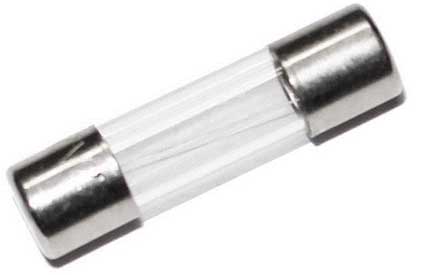What is the reason why the fuse is not conducting?
Fuse protection form
According to the form of protection, it can be divided into: over current protection and over temperature protection. A fuse for overcurrent protection is a commonly used fuse (also called a current limiting fuse). Fuses for overheat protection are commonly referred to as thermal fuses.
The principle of operation of a self-recovering fuse is a dynamic balance of energy. Current flowing through RF/WH series components generates heat due to the relationship between RF/WH series. All or part of the heat generated is emitted into the environment, while the heat not emitted will increase the temperature of RF/WH series components.

The fuse does not conduct electricity
The fuse is electrically conductive before it is damaged.
Non-conductivity is estimated to be the following
1. When using a multimeter to test whether the two ends of the fuse are turned on, the pick point is wrong. Lead to wrong conclusions.
2. Test on the circuit board. Other lines may be connected in parallel near the fuse. Lead to wrong conclusions.
It is recommended to solder the fuse with a soldering iron. Then test with a multimeter. If it is determined that the fuse is not damaged, check the copper foil on the line for breakage.
There are five factors that cause the fuse to break:
1. The power grid circuit suddenly hits high voltage. For example, lightning strikes and self-inductive high voltage when the large motor is cut off nearby, the fuse will blow and protect the internal circuit.
2. When the large electrical equipment of the internal circuit starts, there will be a large current. If there is a large electrical appliance in use at this time, the total current is overloaded, causing the fuse to blow.
3. The fuse used is small and easy to blow.
4. The fuse holder is used for a long time or loose, the contact resistance is increased, it is easy to generate heat and accidentally blown.
5, the electrical short circuit or short circuit, causing the fuse to blow.
According to the form of protection, it can be divided into: over current protection and over temperature protection. A fuse for overcurrent protection is a commonly used fuse (also called a current limiting fuse). Fuses for overheat protection are commonly referred to as thermal fuses.
The principle of operation of a self-recovering fuse is a dynamic balance of energy. Current flowing through RF/WH series components generates heat due to the relationship between RF/WH series. All or part of the heat generated is emitted into the environment, while the heat not emitted will increase the temperature of RF/WH series components.

The fuse does not conduct electricity
The fuse is electrically conductive before it is damaged.
Non-conductivity is estimated to be the following
1. When using a multimeter to test whether the two ends of the fuse are turned on, the pick point is wrong. Lead to wrong conclusions.
2. Test on the circuit board. Other lines may be connected in parallel near the fuse. Lead to wrong conclusions.
It is recommended to solder the fuse with a soldering iron. Then test with a multimeter. If it is determined that the fuse is not damaged, check the copper foil on the line for breakage.
There are five factors that cause the fuse to break:
1. The power grid circuit suddenly hits high voltage. For example, lightning strikes and self-inductive high voltage when the large motor is cut off nearby, the fuse will blow and protect the internal circuit.
2. When the large electrical equipment of the internal circuit starts, there will be a large current. If there is a large electrical appliance in use at this time, the total current is overloaded, causing the fuse to blow.
3. The fuse used is small and easy to blow.
4. The fuse holder is used for a long time or loose, the contact resistance is increased, it is easy to generate heat and accidentally blown.
5, the electrical short circuit or short circuit, causing the fuse to blow.





